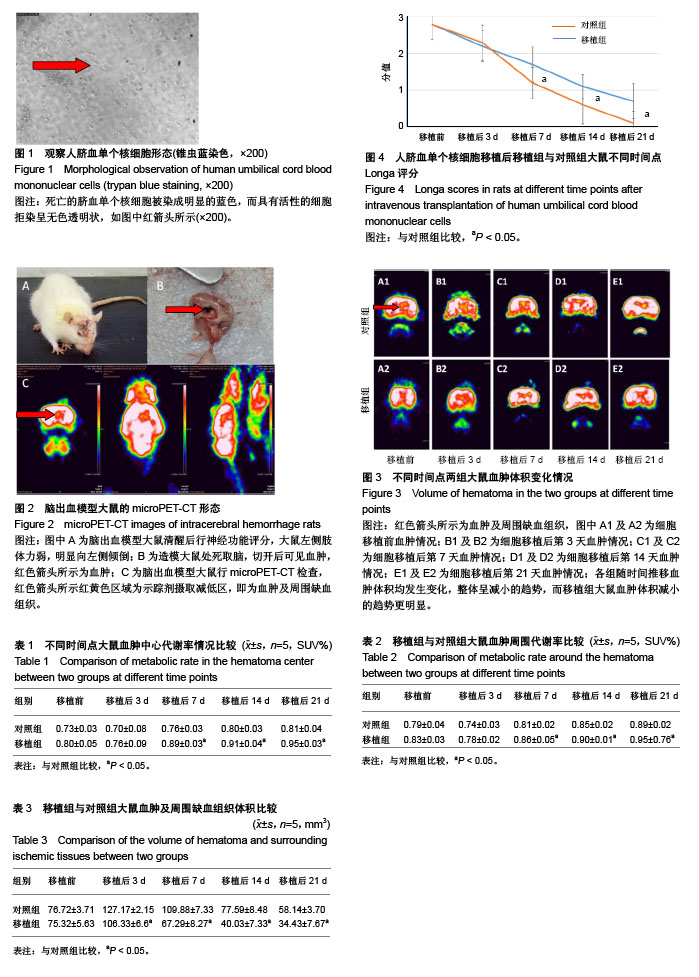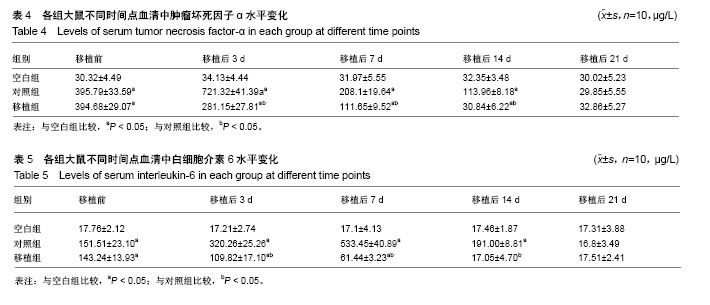| [1] Murray CJ, Lopez AD. Measuring the global burden of disease. N Engl J Med. 2013;369(5):448-457.[2] Duan X, Kang E, Liu CY, et al. Development of neural stem cell in the adult brain. Curr Opin Neurobiol. 2008;18(1):108-115.[3] 侯吉峰,姚星宇,张国华,等.脐带间充质干细胞nestin mRNA表达的研究[J].山东医药,2014,54(10):4-6.[4] 李伟伟,姚星宇,杨丽敏,等.体外诱导人脐带间充质干细胞向神经干细胞的分化[J].中国组织工程研究,2010,18(1):75-80.[5] Jeong H, Yim HW, Cho YS, et al. Efficacy and safety of stem cell therapies for patients with stroke: a systematic review and single arm meta-analysis. Int J Stem Cells. 2014;7(2):63-69.[6] Danby R, Rocha V. Improving engraftment and immune reconstitution in umbilical cord blood transplantation. Front Immunol. 2014;5:68.[7] Parmar S, Liu X, Tung SS, et al. Third-party umbilical cord blood-derived regulatory T cells prevent xenogenic graft-versus-host disease. Cytotherapy. 2014;16(1):90-100.[8] Zhong XY, Zhang B, Asadollahi R, et al. Umbilical cord blood stem cells: what to expect. Ann N Y Acad Sci. 2010;1205: 17-22.[9] Gao P, Ding Q, Wu Z, et al. Therapeutic potential of human mesenchymal stem cells producing IL-12 in a mouse xenograft model of renal cell carcinoma. Cancer Lett. 2010;290(2): 157-166.[10] Lv XM, Liu Y, Wu F,et al.Human umbilical cord blood-derived stem cells and brain-derived neurotrophic factor protect injured optic nerve: viscoelasticity characterization.Neural Regen Res. 2016;11(4):652-656.[11] 姚星宇,杨丽敏,张国华.人脐血单核细胞中的神经样细胞研究[J].临床神经病学杂志,2013,26(1):41-43.[12] Koba W, Jelicks LA, Fine EJ. MicroPET/SPECT/CT imaging of small animal models of disease. Am J Pathol. 2013;182(2): 319-324.[13] Aronowski J, Zhao X. Molecular pathophysiology of cerebral hemorrhage: secondary brain injury. Stroke. 2011;42(6): 1781-1786.[14] 中华人民共和国科学技术部.关于发布《关于善待实验动物的指导性意见》的通知(国科发财字[2006]398号)[J].畜牧兽医科技信息, 2007,(4):35-36.[15] 杨亚萍,刘晓鹏,台立稳.自体血注入法大鼠脑出血模型建立的制作技巧[J].神经药理学报,2012,2(2):29-31.[16] Castaño J, Menendez P, Bruzos-Cidon C, et al. Fast and efficient neural conversion of humanhe matopoietic cells. Stem Cell Reports. 2014;3(6):1118-1131.[17] Karlupia N, Manley NC, Prasad K, et al. Intraarterial transplantation of human umbilical cord blood mononuclear cells is more efficacious and safer compared with umbilical cord mesenchymal stromal cells in a rodent stroke model. Stem Cell Res Ther. 2014;5(2):45. [18] 向静,王昌铭,王景周.脐血单个核细胞体外定向分化为神经移植细胞及其致瘤性的实验研究[J].中国医药导报,2007,4(26):14-16.[19] 姚星宇,杨丽敏,侯吉峰,等.人脐血单个核细胞移植治疗急性一氧化碳中毒后迟发脑病1年随访[J].中国组织工程研究, 2014,18(14): 2179-2184.[20] Kojima T, Hirota Y, Ema M, et al. Subventricular zone-derived neural progenitor cells migrate along a blood vessel scaffold toward the post-stroke striatum. Stem Cells. 2010;28(3): 545-554.[21] 郑勇.内源性干细胞在神经系统变性疾病中的增殖、分化及调节[J].职业与健康,2017,33(12):1721-1724.[22] 朱华,冯铭,卢珊,等.人骨髓间充质干细胞脑内移植对食蟹猴脑出血的治疗作用[J].中国实验动物学报,2011,19(5):361-365. [23] Scuteri A, Miloso M, Foudah D, et al. Mesenchymal stem cells neuronal differentiation ability: a real perspective for nervous system repair? Curr Stem Cell Res Ther. 2011;6:82-92.[24] Banerjee S, Williamson DA, Habib N, et al. The potential benefit of stem cell therapy after stroke: an update. Vasc Health Risk Manag. 2012;8:569-580.[25] Bao X, Feng M, Wei J, et al. Transplantation of Flk-1+human bone marrow-derived mesenchymal stem cells promotes angiogenesis and neurogenesis after cerebral ischemia in rats. Eur J Neurosci. 2011;34(1):87-98.[26] Arijit G, Thomas B, Wolfgang S, et al. Assessment of blood-brain barrier function and the neuroinflammatory response in the rat brain by using cerebral open flow microperfusion (cOFM). PLoS One. 2014;9(5):e98143.[27] 黄文辉.IL-6TNF-a用于高血压脑出血早期预警分级的可行性分析[J].中国实用神经疾病杂志,2016,19(9):18-19.[28] 潘挺军,罗伟文.IL-6在脑出血患者诊治中的临床价值[J].中国现代药物应用,2017,11(23):75-77.[29] Tsuge M, Yasui K, Ichiyawa T, et al. Increase of tumor necrosis factor-alpha in the blood induces early activation of matrix metalloproteinase-9 in the brain. Microbiol Immunol. 2010; 54(7): 417-424.[30] Zhu Y, Guan YM, Huang HL, et al. Human umbilical cord blood mesenchymal stem cell transplantation suppresses inflammatory responses and neuronal apoptosis during early stage of focal cerebral ischemia in rabbits. Acta Pharmacol Sin. 2014;35(5):585-591.[31] 姚星宇.不同途径移植HUCBMNCs对脑出血大鼠神经功能的影响及其在脑内的归巢[D].呼和浩特:内蒙古医科大学,2013. |
.jpg)


.jpg)